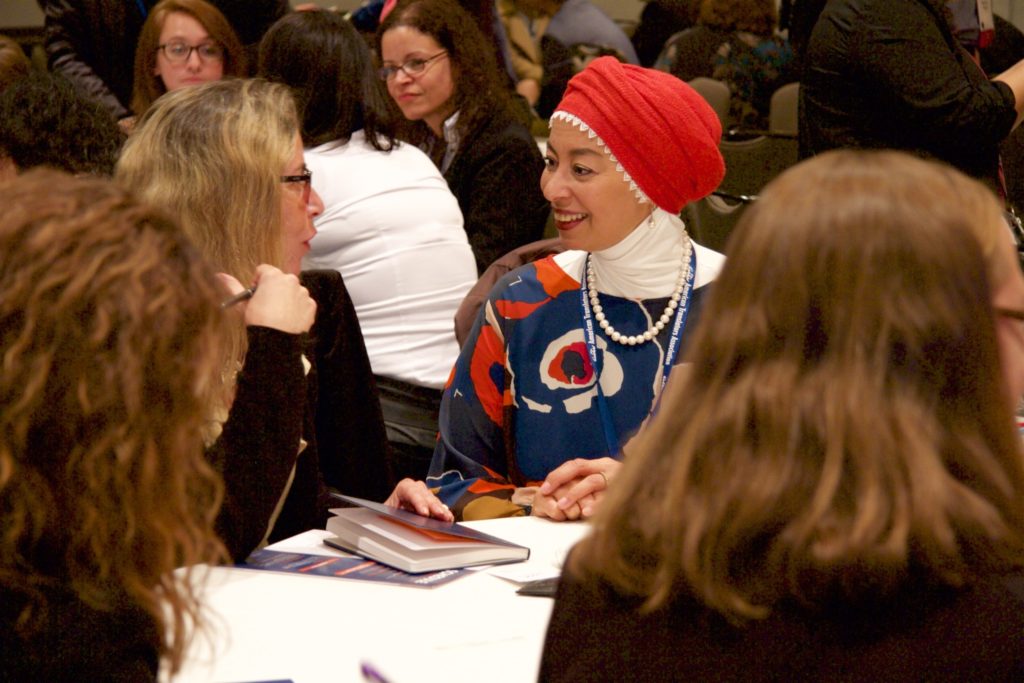When AI Doesn’t Replace Jobs: The Case of Visual Dubbing in Watch the Skies

Artificial intelligence (AI) is often framed as a threat to all kinds of jobs. Many believe automation and AI will fully take over a wide array of professions, and that translation will be one of the first to go. While companies are definitely deploying AI for many tasks, more often it isn’t replacing jobs so much as changing the way we work—and what is possible.
A perfect example of this is the Swedish sci-fi feature film Watch the Skies (original title: UFO Sweden). It recently made history as the first feature-length movie to use AI-powered visual dubbing or “vubbing.” The original Swedish version of Watch the Skies was released in 2022, followed by the vubbed English version in 2025. The new technology makes the English version feel more natural, and thereby improves the viewer’s experience. But it doesn’t replace human translators or voice actors. It enhances the creative work of humans, allowing it to shine even brighter.
Let’s go behind the camera for a closer look at what’s at work in this new workflow of translation in film.
What’s the Difference Between Dubbing and Visual Dubbing?
If you’ve ever watched a foreign film, you likely know the difference between subtitling and dubbing, and you probably have your personal preference. Dubbing is a voice-over audio track in another language that replaces the original spoken dialogue. Voice actors perform the translated dialogue while watching the film to synchronize the audio as best they can with what the actors are saying and doing on the screen.
Dubbing allows you to watch foreign films in your native language rather hearing the original actor’s voices and reading translated subtitles at the bottom of the screen. But no matter how good the dubbing is, the lip and mouth movements often don’t match up perfectly. That’s not due to a lack of quality work from the dubbing team. The fact is, languages are simply very different. Some viewers find these mismatched movements distracting, which is why some people choose subtitling over dubbing when watching foreign language content.
Visual dubbing now offers a technological solution to this common problem. Vubbing uses AI-enhanced software to modify the on-screen lip movements of each actor to match the translated dialogue.
This new technology is often confused with “AI dubbing” where AI is used to translate the video or audio dialogue and synchronize a machine voice with the actor’s mouth movements. AI dubbing is an attempt to cut out human translators and voice actors from much of the dubbing process. But vubbing is just the opposite: By modifying the visual content, film producers can focus on creating a native experience in any language—one that relies on human translators for idiomatic dialogue adaptations and human voice actors for natural delivery of the translated dialogue.
This distinction is crucial. Unlike AI dubbing tools, which are intended to remove most human intervention from the dubbing process, vubbing empowers the industry to make use of human assets to produce a better foreign language film experience.
The Film Debut of Vubbing in Watch the Skies
The visual dubbing technology used in Watch the Skies was developed by a company called Flawless AI. Their system analyzes the actor’s face, learns the dynamics of speech, and subtly adjusts the mouth and jaw movements to fit the new language track. The result literally speaks for itself. The actors appear to be talking naturally in the language you hear with no lip movement mismatches, creating an illusion that they performed the lines themselves.
In Watch the Skies, On-Screen Actors became Their Own Voice-Over Artists
In the case of Watch the Skies, that’s exactly what happened. The original Swedish actors were also the English voice actors—meaning they dubbed themselves. Listening to their Swedish accents gives the film a decidedly Swedish touch that just might win over subtitle fans who prefer the authentic touch when watching foreign content. In any case, AI did not replace humans, but helped them get the job done in a different way.
An AI-Enhanced Localization Process That Puts Humans First
In the translation industry, “localization” is the process of translating and adapting content for a foreign target audience. Vubbing is now a new and very promising form of localization for the film industry.
So what exactly did the localization process look like for Watch the Skies? The actual workflow hasn’t been disclosed, but we know what tool they used and that the original actors dubbed themselves. So, as a Spanish-to-English translator with years of experience in audiovisual translation, I can tell you that it probably looked something like this:
- Translation and adaptation: A team of human translators and localization experts translated what’s called the dialogue list—a specialized transcription of the film’s Swedish audio track—into English. The translation was then edited and adapted into a script that the voice actors used to record the English audio.
- Voice-over performance: The original actors recorded the translated dialogue in a studio while watching themselves on screen, ensuring emotional authenticity, tone, and pacing aligned with the original Swedish and the action in each scene.
- AI processing: Flawless AI’s visual dubbing tool edited the video, adjusting the lip movements to align with the English audio and produce the final polished result, with lots of help from technical experts behind the scenes.
The Future of Foreign Film?
If you haven’t seen Watch the Skies, I invite you to check it out. As a movie lover myself, I find it hard to tell that you’re watching a film originally produced in Swedish. Plus, the actor’s accents add authenticity, providing a unique viewing experience.
As a translator who works in the audiovisual industry, I’m excited about this new AI tool and how it can make my behind-the-scenes work look and feel like the original on the big screen. AI-powered vubbing can solve a purely technical challenge—synchronizing lip movements—that has long been a stumbling block in dubbing. And it’s another reminder of how AI can help rather than replace human creativity.
About the Author
 Molly Yurick is a Spanish to English subtitler and translator. Her subtitles can be seen on Netflix and she specializes in tourism translation. She is also an active volunteer for the American Translators Association. The American Translators Association represents almost 9,000 translators and interpreters in more than 100 countries. To hire a translation or interpreting professional, please visit www.atanet.org/directory.
Molly Yurick is a Spanish to English subtitler and translator. Her subtitles can be seen on Netflix and she specializes in tourism translation. She is also an active volunteer for the American Translators Association. The American Translators Association represents almost 9,000 translators and interpreters in more than 100 countries. To hire a translation or interpreting professional, please visit www.atanet.org/directory.
Language Services Directory
Subscribe to The ATA Compass
Connect with The ATA Compass
Recent Posts
Find a Translator or Interpreter Near You
Searching for a Nearby Translator or Interpreter? Whether you require accurate document translations, real-time interpreting for an event, or specialized industry expertise, finding the right professional near you has never…
Read MoreTranslator vs. Interpreter
Watch a Day in the Life of Translators and Interpreters See how translators and interpreters work in this short animated video. Translators do the writing Translators work with the written…
Read MoreBuying Language Services
Guide to Buying Translation Services Translators help power the global economy, working with businesses, governments, non-profits and individuals. Translators work with the written word. The ATA Guide to Buying Translation…
Read MoreWhy You Should Use a Certified Translator or Interpreter
Choosing a Certified Professional is the Smart Choice A certified translator or interpreter ensures effective, accurate, and culturally sensitive communication that truly bridges the gap between languages and cultures. Accuracy…
Read MoreExploring Translation and Interpreting Services
Why Are Language Services Essential in an Internationalized World? In a world where communication knows no bounds, effective language services are paramount. ATA helps you find professional translators and interpreters…
Read MoreLanguage Services Directory
Start Your Search ATA’s Language Services Directory includes a list of all ATA members of individuals, as well as companies. Need help finding the right professional? Professional translators and interpreters…
Read More






